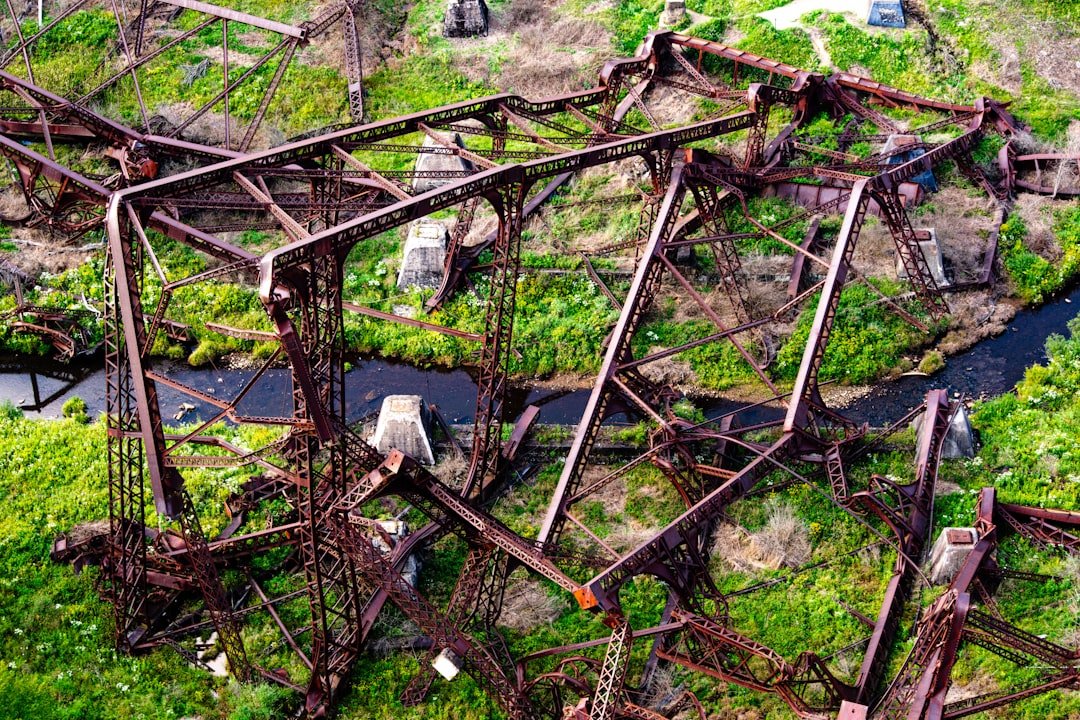Renovation projects can be exciting and transformative, whether you’re updating your home or renovating a commercial space. However, one aspect of renovation that often gets overlooked is the cleanup and disposal of debris. Proper renovation debris cleanup is essential for maintaining a clean and safe environment, as well as for protecting the environment and public health. In this article, we will explore the importance of proper renovation debris disposal, the types of debris that are commonly generated during renovation projects, safety precautions for cleanup, the tools and equipment needed for the job, and how Chandler Junk Removal can help with renovation debris disposal.
Key Takeaways
- Proper renovation debris disposal is crucial for safety and environmental reasons.
- Renovation debris can include hazardous materials such as asbestos and lead-based paint.
- Safety precautions such as wearing protective gear and using caution when handling heavy debris are important during cleanup.
- Tools and equipment such as gloves, masks, and dumpsters are necessary for effective cleanup.
- Hiring a professional junk removal service like Chandler Junk Removal can ensure proper disposal and save time and effort.
Importance of Proper Renovation Debris Disposal
Improper renovation debris disposal can have negative impacts on both the environment and public health. When renovation debris is not disposed of properly, it can end up in landfills where it takes up valuable space and contributes to pollution. Many types of renovation debris contain hazardous materials that can leach into the soil and water, posing a threat to ecosystems and human health. Additionally, when debris is not properly contained or secured during transport, it can become airborne and create a hazard for nearby communities.
Following local regulations and guidelines for renovation debris disposal is crucial to minimize these negative impacts. Local authorities often have specific requirements for how different types of debris should be handled and disposed of. By following these regulations, you can ensure that hazardous materials are properly contained and disposed of, recyclable materials are diverted from landfills, and the overall environmental impact of your renovation project is minimized.
Types of Renovation Debris
During a renovation project, various types of debris are generated depending on the scope of the project. Some common types of renovation debris include:
1. Drywall: Drywall is a common material used in interior walls and ceilings. It is typically made of gypsum board covered with paper. When drywall is removed during a renovation, it can create a significant amount of dust and debris. Proper disposal of drywall involves separating the gypsum board from the paper and recycling them separately.
2. Flooring: Whether you’re removing carpet, hardwood, or tile flooring, the debris generated can be substantial. Carpet and padding should be rolled up and secured for disposal, while hardwood and tile flooring may need to be broken down into smaller pieces for easier handling and disposal.
3. Appliances: Renovating a kitchen often involves replacing old appliances with new ones. Appliances such as refrigerators, stoves, and dishwashers can be bulky and heavy, requiring special equipment and handling during removal and disposal. It is important to properly dispose of appliances to prevent hazardous materials from entering the environment.
Each type of renovation debris requires specific disposal methods to ensure proper handling and minimize environmental impact. It is important to familiarize yourself with local regulations and guidelines to determine the appropriate methods for disposing of each type of debris.
Safety Precautions for Renovation Debris Cleanup
Renovation debris cleanup can pose various safety hazards that need to be addressed to protect yourself and others involved in the project. Some potential hazards include:
1. Sharp edges: Many types of renovation debris, such as broken glass or metal fragments, can have sharp edges that can cause cuts or puncture wounds. It is important to wear gloves and other protective gear when handling debris to minimize the risk of injury.
2. Hazardous materials: Some renovation debris may contain hazardous materials such as lead paint, asbestos, or chemicals. These materials can pose serious health risks if not handled properly. It is important to identify and handle hazardous materials according to local regulations and guidelines.
3. Heavy lifting: Renovation debris can be heavy and difficult to lift, increasing the risk of strains or other injuries. It is important to use proper lifting techniques or seek assistance when dealing with heavy items.
To stay safe during renovation debris cleanup, it is important to wear appropriate protective gear such as gloves, masks, and safety goggles. It is also important to use caution when lifting heavy items and to be aware of potential hazards such as sharp edges or hazardous materials. Following safety guidelines and regulations will help ensure a safe and successful cleanup process.
Tools and Equipment Needed for Renovation Debris Cleanup
Having the right tools and equipment is essential for a successful renovation debris cleanup. Some essential items include:
1. Gloves: Sturdy gloves are necessary to protect your hands from sharp edges, splinters, or hazardous materials.
2. Masks: Depending on the type of debris being handled, masks may be needed to protect against dust, fumes, or other airborne particles.
3. Safety goggles: Safety goggles are important for protecting your eyes from flying debris or hazardous materials.
4. Dumpster or waste container: A dumpster or waste container is necessary for collecting and containing the debris during cleanup. It is important to choose a container that is appropriate for the amount and type of debris being generated.
5. Lifting equipment: Depending on the size and weight of the debris, lifting equipment such as dollies or hand trucks may be needed to safely move heavy items.
Having the right tools and equipment will not only make the cleanup process more efficient but also help ensure your safety during the project.
Steps to Managing Renovation Debris Cleanup
Managing renovation debris cleanup requires careful planning and organization. Here are some steps to help you stay organized and efficient during the cleanup process:
1. Assess the site: Before starting the cleanup, assess the site to determine the scope of the project and identify any potential hazards or challenges.
2. Create a plan: Develop a plan for how you will tackle the cleanup, including a timeline, a list of tasks, and a strategy for disposing of different types of debris.
3. Gather necessary tools and equipment: Make sure you have all the tools and equipment you need before starting the cleanup. This will help you avoid delays or interruptions during the process.
4. Sort and separate debris: As you clean up, sort and separate the debris into different categories such as recyclables, hazardous materials, and general waste. This will make disposal easier and more efficient.
5. Dispose of debris properly: Follow local regulations and guidelines for disposing of each type of debris. This may involve recycling certain materials, arranging for hazardous waste disposal, or using designated waste disposal facilities.
6. Clean and sanitize the site: Once all the debris has been removed, clean and sanitize the site to ensure it is safe and ready for the next phase of the renovation project.
By following these steps and staying organized throughout the cleanup process, you can ensure a clean and safe renovation site.
Benefits of Hiring Chandler Junk Removal for Renovation Debris Cleanup
While it is possible to handle renovation debris cleanup on your own, hiring a professional junk removal service like Chandler Junk Removal can offer several benefits. Some of these benefits include:
1. Expertise and experience: Professional junk removal services have the expertise and experience to handle all types of renovation debris safely and efficiently. They are familiar with local regulations and guidelines for disposal, ensuring that all debris is handled properly.
2. Time-saving: Renovation debris cleanup can be time-consuming, especially if you are not familiar with the process. Hiring a professional service allows you to focus on other aspects of your renovation project while they take care of the cleanup.
3. Proper disposal: Professional junk removal services have access to recycling facilities and waste disposal sites, ensuring that debris is disposed of properly. They can also help identify hazardous materials and arrange for their safe disposal.
4. Safety: Professional junk removal services have the necessary tools, equipment, and training to handle renovation debris safely. They can minimize the risk of injuries or accidents during the cleanup process.
How Chandler Junk Removal Can Help with Renovation Debris Disposal
Chandler Junk Removal offers a range of services to help with renovation debris disposal. Some of the services they provide include:
1. Sorting and recycling: Chandler Junk Removal can help sort and separate different types of renovation debris for recycling. They have partnerships with recycling facilities to ensure that recyclable materials are diverted from landfills.
2. Hazardous waste disposal: If your renovation project involves hazardous materials, Chandler Junk Removal can help arrange for their safe disposal. They are familiar with local regulations and guidelines for handling hazardous waste and can ensure that it is disposed of properly.
3. Efficient and timely service: Chandler Junk Removal prides itself on providing efficient and timely service. They understand the importance of completing the cleanup process quickly so that you can move forward with your renovation project.
4. Responsible disposal: Chandler Junk Removal is committed to responsible disposal practices. They strive to minimize the environmental impact of renovation debris by recycling materials whenever possible and disposing of waste in accordance with local regulations.
Tips for Choosing the Right Renovation Debris Cleanup Service
When choosing a renovation debris cleanup service, it is important to consider several factors to ensure you are hiring a reputable and reliable company. Here are some tips to help you make the right choice:
1. Check reviews and references: Read reviews and testimonials from previous customers to get an idea of the company’s reputation and the quality of their service. You can also ask for references from the company and contact them directly for feedback.
2. Certifications and licenses: Ensure that the company has the necessary certifications and licenses to handle renovation debris cleanup. This will give you peace of mind knowing that they are qualified to handle the job safely and responsibly.
3. Insurance coverage: Verify that the company has liability insurance coverage in case of any accidents or damages during the cleanup process. This will protect you from any potential liabilities.
4. Compliance with regulations: Choose a company that follows local regulations and guidelines for renovation debris disposal. This will ensure that the cleanup is done in accordance with the law and minimize any potential environmental impact.
By considering these factors and doing your due diligence, you can choose a renovation debris cleanup service that meets your needs and ensures a successful cleanup process.
Achieving a Clean and Safe Renovation Site with Chandler Junk Removal
Proper renovation debris cleanup and disposal are essential for maintaining a clean and safe environment, as well as protecting the environment and public health. By following local regulations and guidelines, sorting and separating different types of debris, and using the right tools and equipment, you can ensure that your renovation project is completed responsibly. Hiring a professional junk removal service like Chandler Junk Removal can offer several benefits, including expertise, time-saving, proper disposal, and safety. With their help, you can achieve a clean and safe renovation site while minimizing the environmental impact of your project.
If you’re in the midst of a renovation project, you know how quickly debris can accumulate. Managing Renovation Debris: Cleanup Essentials is a must-read article for anyone looking to keep their workspace clean and organized. However, if you’re also in need of professional junk removal services, Junk Removal Chandler has got you covered. Their blog offers valuable insights and tips on how to efficiently handle renovation debris. Additionally, their article on the top 5 reasons for using dumpster pick-up services provides further guidance on how to effectively dispose of waste during your renovation project. Don’t let debris slow you down – check out Junk Removal Chandler’s blog and take advantage of their expert services. Read more here.




